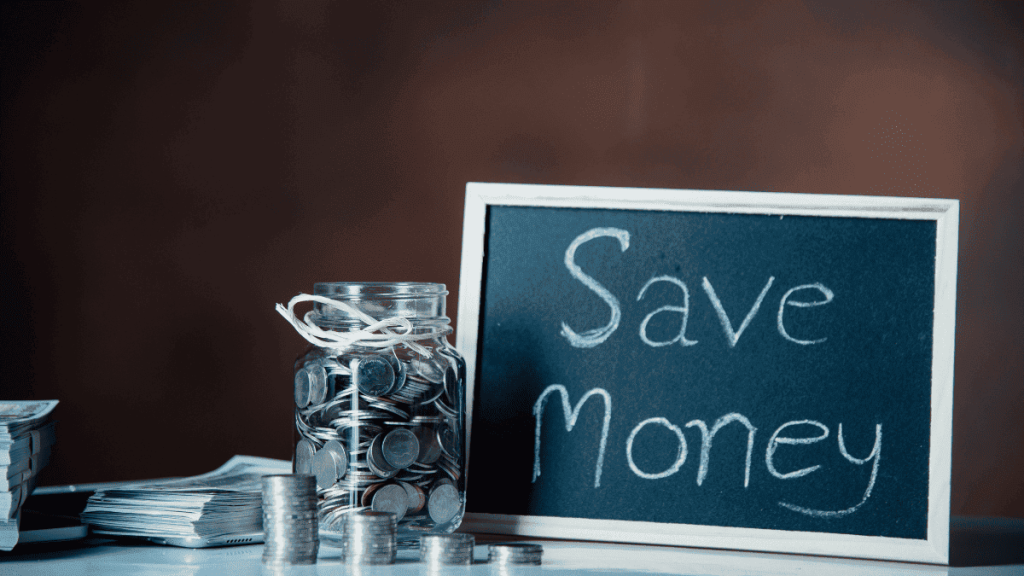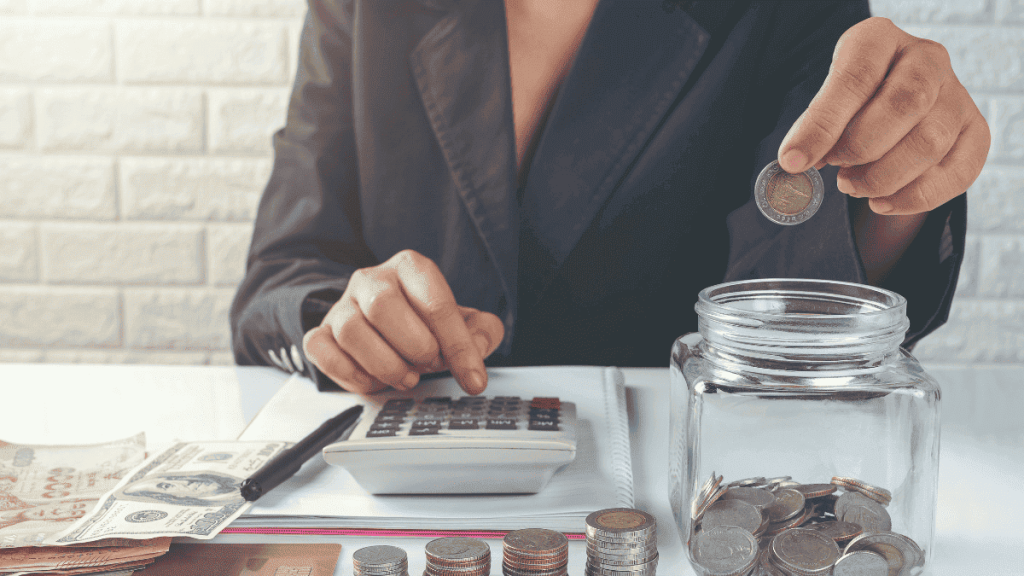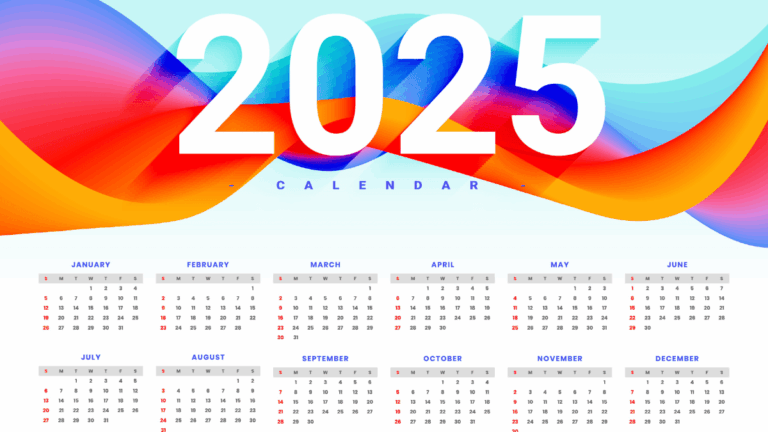Smart Strategies for How to Save Money Without Sacrifices
That familiar sinking feeling returned last winter when I checked my finances. Even with a steady job, my savings weren’t growing. Many people experience this, often because their expenses are too high or their income leaves little room after bills. To address my own situation, I committed to revising my budget and consistently transferring a fixed amount of my paycheck into savings, adopting the principle of allocating a substantial percentage, like one-third, specifically for saving. In fact, it was practically empty. Sound familiar?
I’d tried all those budgeting apps and spreadsheets that financial experts recommend. I came across articles advising to skip coffee shop visits and bring homemade lunches. But honestly? Those tips never stuck because they made me feel like I was punishing myself.
How to save money became my personal mission, but with an important twist – I wanted to save without feeling miserable in the process. Because what’s the point of having money saved if you’re not enjoying your life along the way?
After plenty of trial and error (and yes, some embarrassing financial mistakes), I found approaches that actually worked for me. Today, my savings grow steadily each month, and I still get to enjoy the things that truly matter. No extreme budgeting or eating ramen required.
Let me share what’s worked for me, and might just work for you too.

Getting Real About Your Money Habits
Before we dive into specific strategies, we need to talk about something most financial advice skips over: understanding what you’re actually doing with your money right now.
The Money Tracking Eye-Opener
Most of us have a pretty fuzzy idea of where our cash goes. We think we spend “about” this much on groceries or “around” that much eating out. But the reality? Often quite different.
Try this: For just one week (because a month feels overwhelming), note every single penny you spend. If it’s more convenient, consider using your phone’s notes application. Don’t judge yourself during this process – we’re just gathering information here.
When I first did this, I nearly fell off my chair. Those “just this once” purchases were happening almost daily. That streaming service I thought cost $9.99? Had quietly jumped to $14.99 months ago. Those quick convenience store stops were adding up to more than my weekly grocery shop.
Finding Your Personal Money Leaks
We all have them – those expenses that drain our wallets without adding much value to our lives. And they’re different for everyone.
For my friend Mike, it was buying lunch at work every single day. For my sister, it was her endless collection of beauty products she rarely used. For me? It was mindless online shopping when I felt bored.
Look at your spending and ask: “Which of these purchases didn’t really make my life better?” Those are your money leaks – and plugging them won’t feel like a sacrifice because you’re not really getting much from them anyway.
Practical Ways to How to Save Money Without Feeling Deprived
Now let’s get into specific strategies that have worked for real people who don’t want to track every penny or feel constantly restricted.
The “Pay Yourself First” Game-Changer
This single habit transformed my finances more than anything else: I set up an automatic transfer to my savings account on payday, before I could spend the money on anything else.
Start with whatever amount feels comfortable – even if it’s just $20 or $30 per paycheck. The magic happens because you learn to live on what’s left in your checking account. After a few months, try bumping it up by a small amount. It’s so seamless that you probably won’t pick up on it.
I started with just 5% of my paycheck and worked up to 15% over time. My spending habits naturally adjusted around what was available.
The Great Subscription Clean-Out
We’re drowning in subscriptions these days. Take 15 minutes to list every recurring payment coming out of your accounts. Don’t forget the annual ones too!
Then ask yourself these questions:
- When was the last time I wore this?
- Does this subscription bring me joy or make my life easier?
- Is there a free or cheaper alternative I could try?
Be ruthless here. I was shocked to discover I was paying for three different video streaming services plus two music platforms – and mostly watching/listening to just one of each. Cutting the extras saved me about $45 monthly without feeling any loss.
Food Spending: Where Money Disappears
For most people, food is where a huge chunk of money vanishes. But eating is also one of life’s great pleasures, so extreme restrictions usually backfire.
Instead of dramatic changes, try these more balanced approaches:
- Plan just 3-4 meals each week (not every single one)
- Check what you already have before shopping (I was buying duplicates constantly)
- Keep a few “emergency” freezer meals for those nights when takeout seems like the only option
- Try the “shop once a week” approach instead of multiple small trips
When I started planning even a few meals weekly, my grocery bills dropped by about a quarter. And surprise – I actually wasted way less food too.
Getting Around Without Breaking the Bank
Transportation expenses can consume a significant share of your budget. While not everyone can make major changes like selling their car, small adjustments add up quickly:
- Could you carpool with someone even just once a week?
- For shorter trips, is walking or biking an option occasionally?
- Have you looked into whether your employer offers any transit benefits?
I started walking to my local grocery store instead of driving every time. Not only did I save on gas, but those quick walks became little moments of peace in my busy week.
Tackling the Bigger Purchases
While daily habits matter, it’s often the larger expenses that can make or break your savings goals. Here’s how to handle them:
The 3-Day Rule
For any non-urgent purchase over $100, give yourself a 3-day cooling-off period. Just tell yourself, “If I still want this in three days, I can get it.”
You’d be surprised how often the “must-have” feeling passes. I was absolutely convinced I needed a fancy new kitchen gadget last month. After three days, I realized my current one worked perfectly fine. That simple pause saved me $200.
Consider Cost-Per-Use
Before buying something significant, think about how many times you’ll actually use it. Then divide the cost by that number to get your “cost per use.”
A $500 quality winter coat you’ll wear 100 days a year for three years? That’s about $1.66 per wear – pretty reasonable. But a $200 special occasion outfit you’ll wear twice? That’s $100 per use!
This mental trick helps me spend more on things I use constantly and less on things that will mostly sit unused.
Sometimes Quality Saves Money
My granddad always said, “I’m too poor to buy cheap things.” I didn’t understand that until I was older.
When I first moved out, I bought the absolute cheapest furniture I could find. Within two years, most of it needed replacing. For my second apartment, I saved longer and bought fewer but better-quality pieces. Ten years later, many of those items are still going strong.
For things you use daily – a mattress, winter boots, your computer – spending more upfront often saves money down the road.

Enjoying Life While Building Savings
The whole point of saving is to improve your life, not make it miserable. Here’s how to find that sweet spot:
Find Free (or Cheaper) Versions of What You Love
Almost anything you enjoy has a less expensive alternative:
- Movie buff? Check out your library’s free streaming service
- Fitness enthusiast? Look for free community workouts in parks
- Foodie? Try lunch specials instead of dinner, or cooking classes instead of restaurants
- Reader? Libraries and book swaps can feed your habit for free
I love live music but concert tickets were killing my budget. Then I discovered my city has free outdoor concerts all summer long. The atmosphere is actually more fun than stuffy indoor venues!
Focus on Experiences, Not Stuff
Research consistently shows that spending on experiences brings more lasting happiness than buying material things. Memories appreciate over time, while most objects depreciate.
Some of my happiest money spent last year wasn’t on things at all – it was on a weekend trip with old friends, a cooking class I took, and concert tickets. Months later, these experiences still bring me joy in a way that a new purchase rarely does.
Embrace “Good Enough”
We live in a world that’s constantly pushing premium versions, upgrades, and luxury options. But honestly, the basic version is often perfectly fine.
Do you really need the premium subscription with all the bells and whistles? The luxury model with features you’ll rarely use? The top-shelf brand when the store brand works just as well?
I used to always choose the highest tier of everything. Now I ask if the extra features actually matter to me. Usually, they don’t.
Shifting How You Think About Money
Beyond specific tactics, lasting financial change comes from adjusting your relationship with money and spending.
The Joy of Appreciating What You Have
This might sound too simple, but it works wonders: Regularly appreciate what you already own.
Spend an afternoon “shopping” in your own closet. Re-read books you enjoyed the first time. Use up pantry ingredients before buying more.
I now do a quarterly “shop my stuff” day where I look through what I already own. It’s amazing how many forgotten treasures I rediscover.
Breaking the Emotional Spending Cycle
Many of us use shopping as a way to deal with feelings – buying something new when we’re sad, stressed, or bored.
Tune into the feelings that trigger unplanned purchases. The next time you get the impulse to buy something spontaneous, pause and consider: ‘What underlying need am I trying to meet with this? Am I looking for comfort, a distraction, or perhaps a quick lift?’
I noticed I often shopped online when I was procrastinating on work projects. Now when I catch myself browsing stores during work hours, I recognize what’s really happening – and can address the actual problem instead.
Putting Your Savings to Work
Saving without purpose can feel pointless. Here’s how to make those saved dollars meaningful:
First Things First: Your Safety Net
Before fancy investments or saving for vacations, build an emergency fund covering 3-6 months of basic expenses.
I know that sounds huge. Start with just $500, then $1,000, and build from there. Having even a small cushion changes everything – that unexpected car repair becomes an inconvenience, not a financial disaster.
My first emergency fund took almost a year to build. Since then, it’s saved me from debt multiple times when unexpected expenses cropped up.
Give Every Dollar a Job
Once you’re saving regularly, assign different purposes to your money. Maybe 50% of savings goes to your emergency fund, 30% to a fun goal like travel, and 20% to a longer-term dream.
When your savings have specific purposes, you’re much less likely to raid them for random spending.
I use separate savings accounts for different goals. My “fun money” is at my regular bank, while my emergency fund is at an online bank that takes 2-3 days to transfer – just enough friction to prevent impulse withdrawals.
Simple Takeaways for Pain-Free Saving
- Track your spending for just one week to see where your money really goes
- Set up automatic transfers to savings on payday – start small and increase gradually
- Cut subscriptions you rarely use – you probably won’t even miss them
- Plan just a few meals each week to reduce food waste and impulse food purchases
- Try the 3-day rule before any non-essential purchase over $100
- Calculate the cost-per-use for bigger purchases
- Look for free or cheaper versions of activities you enjoy
- Choose experiences over accumulating more stuff
- Practice appreciating what you already own
- Build an emergency fund before saving for other goals
- Give your savings specific purposes to stay motivated
Remember this: Saving money isn’t about denying yourself; it’s about being deliberate with your spending so your funds are directed towards what truly matters to you. The financial security you gain from saving provides a peace of mind that no impulse purchase can ever provide.
What small change could you try this week? Sometimes the tiniest adjustments create the biggest results over time.






